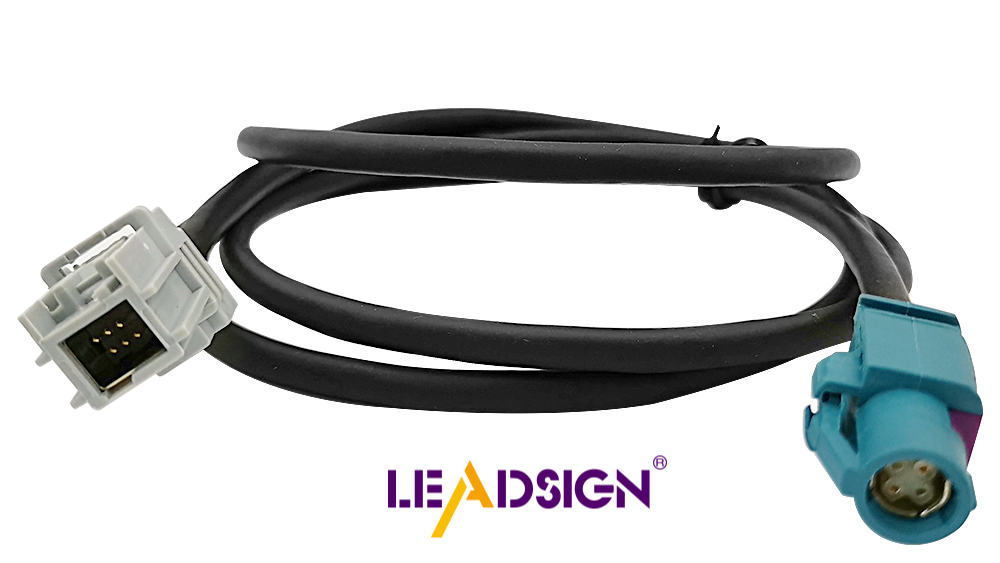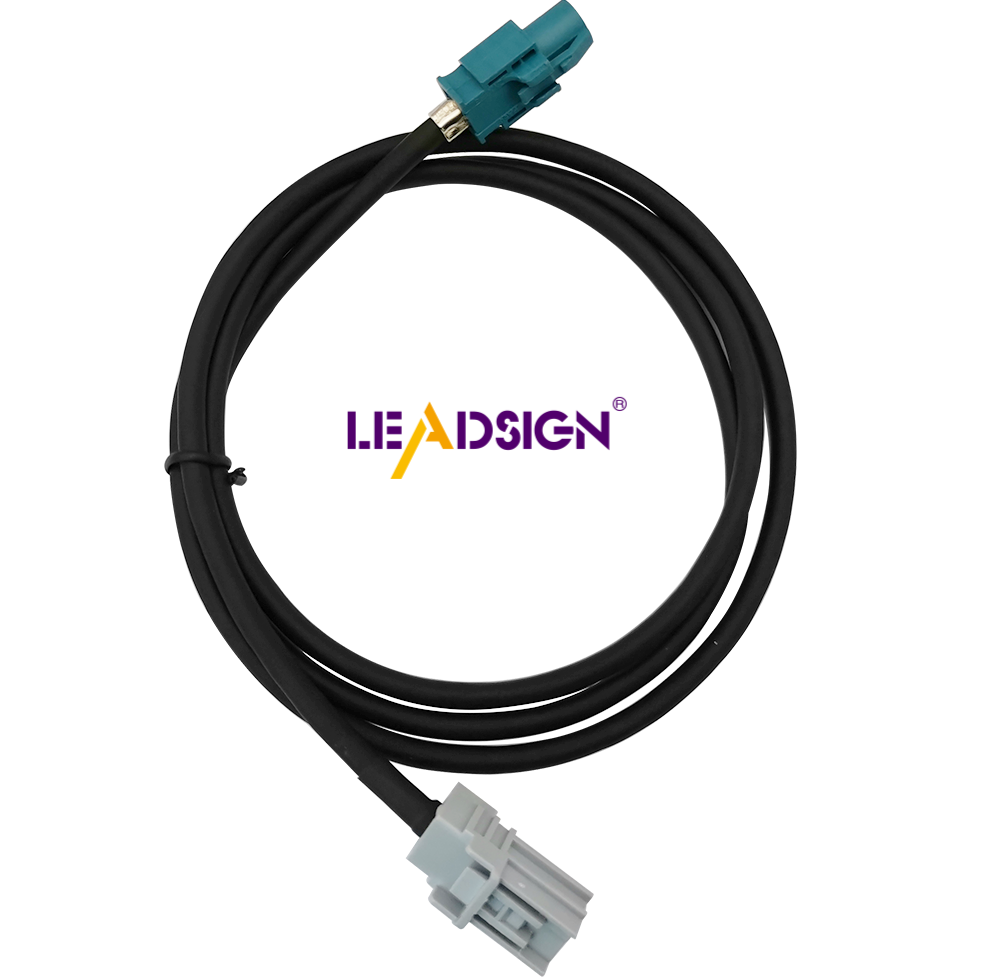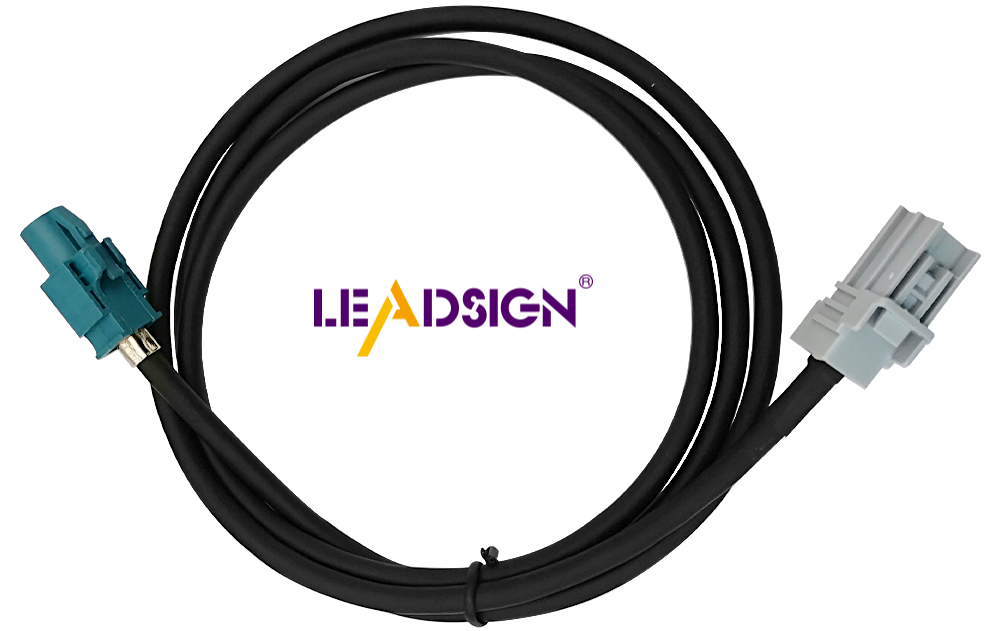Comparing HSD and Traditional Speaker Cables for Car Audio Systems

For optimal performance in car audio systems, selecting the right cables is crucial. Comparing HSD cables and traditional car audio speaker cables can guide you in making an informed decision. HSD cables are designed to handle high-frequency signals effectively, while traditional car audio speaker cables are suited for transmitting audio signals over short distances. The choice between HSD cable and traditional car audio speaker cable impacts sound quality and system efficiency. Understanding these differences ensures the best audio experience in your vehicle.
Signal Handling Capabilities
HSD Cables
Technical specifications
HSD cables excel in high-frequency transmission. These cables use advanced materials to ensure minimal signal loss. The design includes excellent anti-interference capabilities. HSD connectors provide durability and reliability in harsh environments.
Advantages in signal transmission
HSD cables offer superior signal clarity. The low plugging force and soft contact impedance enhance performance. These features make HSD cables ideal for complex audio systems. High-speed data transmission ensures efficient audio delivery.
Limitations and considerations
HSD cables may come with a higher cost. The advanced construction requires careful installation. Compatibility with older systems might pose challenges. Consider the specific needs of your car audio setup before choosing HSD cables.
Traditional Speaker Cables
Technical specifications
Traditional speaker cables often use copper conductors. These cables focus on maintaining signal integrity over short distances. The insulation provides low resistance. Multiple insulated conductor groups ensure optimal performance.
Advantages in signal transmission
Traditional speaker cables deliver reliable audio quality. The low dielectric constant insulation allows more music to reach speakers. Copper braided conductors enhance performance. These cables offer an economical solution for standard audio systems.
Limitations and considerations
Traditional speaker cables may face interference issues. The lack of advanced shielding can affect signal clarity. Installation flexibility is limited compared to HSD cables. Evaluate the distance and environment of your audio system when selecting traditional cables.
Interference Shielding

HSD Cables
Shielding techniques used
HSD cables use advanced shielding techniques. Manufacturers often incorporate foil and braided shields. These methods protect against electromagnetic interference. The design ensures high-frequency signals remain clear.
HSD cables excel in reducing interference. The shielding provides robust protection. This feature enhances audio clarity. Users experience minimal signal distortion.
HSD cables excel in reducing interference. The shielding provides robust protection. This feature enhances audio clarity. Users experience minimal signal distortion.
Practical considerations
Consider the environment when using HSD cables. High-quality shielding may increase cost. Installation requires careful handling. Ensure compatibility with your car audio system.
Traditional Speaker Cables
Shielding techniques used
Traditional speaker cables use basic shielding. Copper conductors often have simple insulation. This design focuses on short-distance transmission. The shielding may not be as advanced as HSD cables.
Effectiveness in reducing interference
Traditional speaker cables may face interference issues. The simple shielding offers limited protection. Users might notice some signal distortion. Consider the location of installation for best results.
Practical considerations
Evaluate the setup when choosing traditional cables. The cost is usually lower than HSD cables. Installation is straightforward. Ensure the environment suits the cable's capabilities.
Flexibility and Installation

HSD Cables
Flexibility in installation
HSD cables provide excellent flexibility for installation. The compact design allows easy routing through tight spaces. High durability ensures reliable performance in various conditions.
Ease of use in various setups
HSD cables adapt well to different audio setups. The connectors offer high data transfer speeds and compatibility with modern systems. Users find these cables suitable for advanced car audio installations.
Limitations in flexibility
Some limitations exist with HSD cables. The advanced construction may require specific handling techniques. Users must consider the impedance of 100 ohms for optimal performance.
Traditional Speaker Cables
Flexibility in installation
Traditional speaker cables offer straightforward installation. The pliable nature makes routing through a car's chassis simple. Users appreciate the ease of handling during setup.
Ease of use in various setups
Traditional cables fit well in standard audio systems. The copper conductors ensure reliable signal transmission. These cables provide an economical choice for basic installations.
Limitations in flexibility
Traditional cables may lack advanced features. The larger size can limit routing options in complex systems. Users might face challenges in high-frequency applications.
Cost Considerations
HSD Cables
Price range and factors affecting cost
HSD cables often come with a higher price tag. Advanced materials and construction contribute to this cost. High-speed data capabilities also influence the price. The brand and quality of the hsd cable can affect overall expenses.
Cost-effectiveness in long-term use
Investing in HSD cables can offer long-term benefits. Durability and performance justify the initial expense. Users experience fewer replacements and maintenance issues. High-quality audio transmission enhances the listening experience.
Traditional Speaker Cables
Price range and factors affecting cost
Traditional speaker cables usually have a lower price range. Copper conductors and basic insulation keep costs down. Simplicity in design reduces manufacturing expenses. Availability in various gauges provides budget-friendly options.
Cost-effectiveness in long-term use
Traditional cables offer a cost-effective solution for standard systems. Lower initial costs appeal to budget-conscious users. Regular maintenance may be necessary for optimal performance. Users should evaluate the specific needs of their audio setup.
Suitability for Different Audio Setups
HSD Cables
Best suited audio setups
HSD cables excel in high-performance audio systems. Advanced car audio setups benefit from these cables. High-frequency signals transmit with clarity. Complex installations require reliable signal handling. HSD cables provide that reliability.
Compatibility with modern systems
Modern car audio systems integrate well with HSD cables. Compatibility with digital infotainment enhances functionality. Systems using Ethernet or USB connections find these cables ideal. High-speed data transmission supports advanced features. HSD cables ensure seamless integration.
Traditional Speaker Cables
Best suited audio setups
Traditional speaker cables suit basic audio systems. Standard car audio setups use these cables effectively. Short-distance signal transmission works well. Simplicity appeals to users seeking straightforward solutions. Traditional cables offer dependable performance.
Compatibility with traditional systems
Traditional audio systems pair well with these cables. Copper conductors maintain signal integrity. Systems without complex digital features find compatibility. Basic installations benefit from the simplicity. Traditional speaker cables provide a cost-effective choice.
HSD cables offer superior signal handling and interference protection. Traditional speaker cables provide cost-effective solutions for basic setups. Evaluate your car audio needs carefully. Consider factors like budget, system complexity, and installation environment. HSD cables suit advanced systems with high-frequency demands. Traditional cables work well for simpler configurations. Choose the cable type that aligns with your specific preferences and requirements.
See Also
Benefits of High-Speed Data Connectors in Car Entertainment Systems
Benefits of High-Speed Data Connectors in Automobile Systems
Advantages of High-Speed Data Connectors in Contemporary Cars

